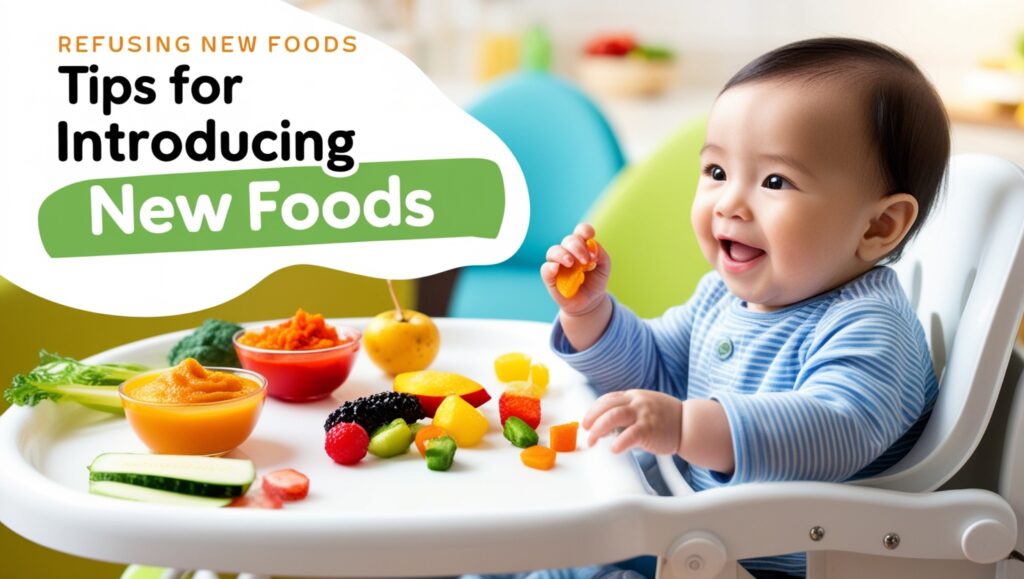Starting solids is an exciting milestone for both you and your baby! The best way to kick off this journey is with single-ingredient purees—simple, wholesome, and packed with essential nutrients. Here’s everything you need to know to get started, from preparation tips to recipes your baby will love.
Why Single-Ingredient Purees Are the Best First Step
Single-ingredient purees allow you to:
- Monitor Allergies: Identify any potential food sensitivities easily.
- Simplify Flavors: Introduce your baby to natural, unprocessed tastes.
- Support Digestion: Help their tiny tummies adjust to solid foods.
Essential Tips for Getting Started
- Timing is Key: Introduce solids around 6 months or when your baby shows readiness signs, such as sitting up unsupported or showing interest in food.
- Start Slow: Begin with one small spoonful once a day and gradually increase.
- Consistency Matters: Make the puree smooth, avoiding chunks or seeds for the first few weeks.
- Wait & Observe: Introduce one new food at a time every 3–5 days to monitor for allergies.
How to Make Perfect Single-Ingredient Purees
Step 1: Choose Fresh Ingredients
Opt for organic fruits and vegetables whenever possible. Fresh produce ensures maximum nutrition and flavor.
Step 2: Cook Thoroughly
Steaming, boiling, or baking softens the food, making it easy to blend. Avoid frying or seasoning.
Step 3: Blend to Perfection
Use a baby-friendly blender or food processor to create a silky, lump-free puree. For thinner consistency, add a small amount of breast milk, formula, or cooled boiled water.
Step 4: Store Smartly
Freeze leftovers in portion-sized silicone trays or containers. Label with dates and use within 3 months.
Baby-Approved Recipes to Get Started
1. Carrot Puree
- Benefits: High in beta-carotene for healthy eyesight.
- Recipe: Steam peeled carrots until soft. Blend until smooth, adding water if needed.
2. Pear Puree
- Benefits: Gentle on the stomach and helps with constipation.
- Recipe: Peel, core, and steam pears. Puree to desired consistency.
3. Sweet Potato Puree
- Benefits: Loaded with fiber and vitamin A.
- Recipe: Roast sweet potatoes, scoop out the flesh, and blend.
4. Apple Puree
- Benefits: Mildly sweet and full of vitamin C.
- Recipe: Peel, core, and steam apples. Blend until creamy.
5. Spinach Puree
- Benefits: High in iron and essential minerals.
- Recipe: Steam fresh spinach leaves and blend with a small amount of water.
Tips for Introducing Purees to Your Baby
- Make It Fun: Sit face-to-face with your baby, smile, and encourage them during feeding.
- Use Baby-Friendly Tools: Silicone-tipped spoons and easy-clean bibs make the process stress-free.
- Be Patient: It’s normal for babies to spit out food initially—it’s all part of the learning process!
Common First Foods to Avoid
While single-ingredient purees are generally safe, steer clear of these foods initially:
- Honey: May cause botulism in infants under 1 year.
- Cow’s Milk: Stick to breast milk or formula for now.
- Salt and Sugar: Babies don’t need added seasonings; let the natural flavors shine!
When to Combine Flavors
Once your baby adapts to single-ingredient purees, try combining them to introduce exciting flavors and textures:
- Apple + Banana.
- Carrot + Peas.
- Sweet Potato + Green Beans.
These combinations provide variety and encourage your baby to explore new tastes.
Signs of Readiness for Solids
Your baby might be ready for solids if they:
- Show curiosity about what’s on your plate.
- Can hold their head up and sit without support.
- Have lost their tongue-thrust reflex, meaning they don’t push food out with their tongue.
Creating a Positive Feeding Experience
- Start Small: Begin with one meal a day and gradually increase.
- Stay Consistent: Feed your baby at the same time each day to establish a routine.
- Engage Your Baby: Talk and encourage them during meals—it makes the experience more enjoyable.
FAQs About Single-Ingredient Purees
Q: Can I freeze purees?
A: Yes! Use ice cube trays for easy portioning and store them in airtight bags or containers.
Q: How long can I store purees?
A: Refrigerate fresh purees for up to 3 days or freeze them for up to 3 months.
Q: What if my baby doesn’t like a puree?
A: Reintroduce it after a few days—babies often need multiple exposures to accept a new food.
Conclusion: A Solid Start to a Healthy Future
Starting with single-ingredient purees is the perfect way to introduce your baby to the world of solid foods. By offering fresh, nutritious, and simple meals, you’re setting the stage for healthy eating habits that will last a lifetime.

